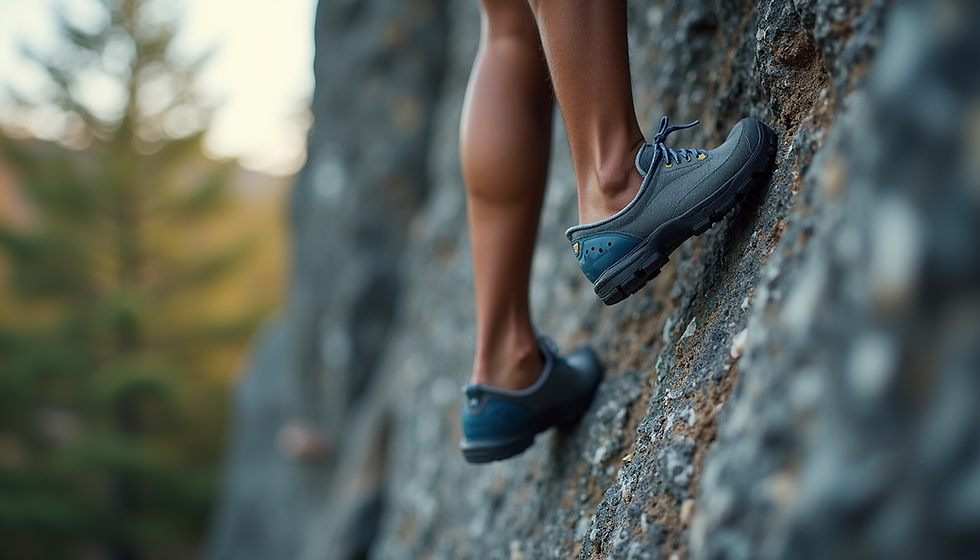How to Read a Climbing Topo: A Beginner’s Guide
- info400279
- Nov 11
- 3 min read
If you’ve ever picked up a climbing guidebook or scrolled through an online route description, you’ve probably seen a topo. Topos are essentially maps of climbing routes, showing the line of the climb, protection points, anchors, and key features. For a beginner, a topo can look like a confusing jumble of lines, numbers, and symbols. But once you learn to interpret it, a topo becomes one of your most powerful tools on the rock — helping you plan, move safely, and climb with confidence.
At How to Climb, I guide climbers across North Wales every week, from first-time top-rope climbers to seasoned adventurers tackling multi-pitch routes. I always emphasise guidebook reading as a core skill: understanding a topo before you start a climb allows you to visualise the route, prepare the right gear, and anticipate cruxes before you reach them.
What a Topo Shows You
A climbing topo highlights the essential elements of a route. Typically, it illustrates the path from base to top, points where you’ll place protection (or clip bolts on sport routes), belay stations, and key features such as cracks, ledges, chimneys, or overhangs. Some topos also include difficulty ratings, approach notes, or suggested gear. They come in various styles — hand-drawn sketches, diagrammatic maps, or annotated photographs — but the purpose is always the same: giving climbers the information needed to move safely and efficiently.
Understanding topos is especially useful in North Wales, where crags range from accessible straightforward slabs at to significantly more complex multi-pitch climbs. On boulders, a simple line on a topo can indicate the start, finish, and key holds, while on multi-pitch climbs, the topo may show belay stances and tricky crux sections.
Why Topo Reading Matters
Topo reading isn’t just academic — it’s practical. Before even stepping onto the rock, you can visualise the route, plan your moves, estimate how much energy you’ll need, and ensure you have the correct gear. For multi-pitch or trad climbs, a topo allows you to communicate clearly with your climbing partner, anticipate tricky sections, and reduce surprises.
Beginners often feel anxious outdoors, but a well-interpreted topo turns uncertainty into confidence.
Even for shorter top-rope routes, learning to read a topo develops a climber’s route-reading skills, which will carry over to more complex climbs later. Being able to identify cruxes, rest positions, and anchor points before you reach them helps you climb more efficiently and safely.
How to Read a Topo
Start by locating the base of the route. Many guidebooks will give approach directions, from a short walk up a hillside to a scramble from a car park. Next, follow the line of the climb, paying attention to features like corners, cracks, and overhangs, and note the cruxes — the hardest sections.
Check the protection points carefully. On sport climbs, these are usually bolts; on trad routes, you’ll see suggested placements for nuts, cams, or slings. Identify belay stations or anchors along the way — these are critical for multi-pitch climbs. Pay attention to the grade to ensure the route is suitable for your ability, and note any annotations about rock type, exposure, or seasonal conditions.
Beginners often find it helpful to cross-reference photos with topo diagrams and to annotate their guidebook with notes about tricky moves, gear placements, or beta from other climbers. Over time, reading topos becomes intuitive and allows you to focus on movement and technique rather than uncertainty.
Practical Tips for Beginners
Start with simple, well-bolted routes in accessible areas.
Practice matching the topo to the rock before attempting more complex climbs. Consider combining topo study with guided instruction — on my courses, I show students how to interpret topos in real time, translating symbols and lines into movement on the rock.
Remember that a topo is a guide, not a guarantee. Weather, seasonal conditions, and rock quality vary, and climbing always requires vigilance and good judgment. Think of the topo as a tool to prepare you, build confidence, and enhance your climbing experience.
Conclusion
Learning to read a climbing topo is a skill that grows with experience, and it’s an essential part of becoming a confident climber. In North Wales, where crags vary from beginner-friendly slabs to challenging multi-pitch faces, a topo can make the difference between a stressful day and a smooth, enjoyable climb.
Whether you’re preparing for your first top-rope adventure or planning a classic trad route in Snowdonia, mastering topo reading will help you climb smarter, safer, and more confidently.




Comments